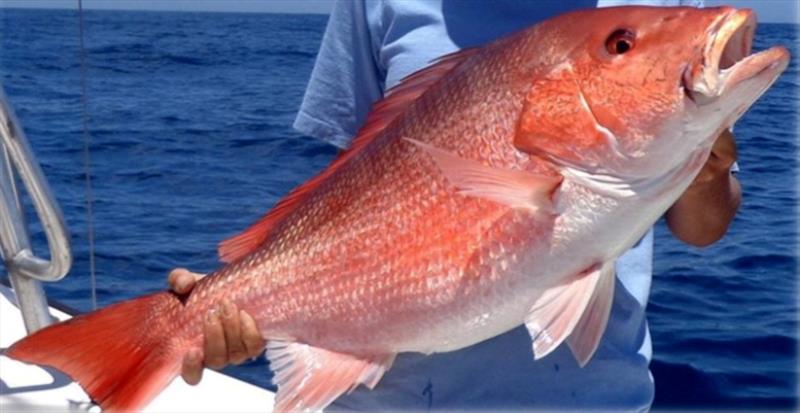
Exploring innovative strategies to reduce red snapper discards
by NOAA Fisheries 7 Jun 2024 15:46 UTC

Red snapper © Florida Sea Grant
Fishing is a favorite pastime and an economic driver, especially in the Southeast. NOAA Fisheries recognizes that recreational and commercial fishers, fishery managers, and others are frustrated by short fishing seasons for South Atlantic red snapper and high levels of dead discards. Last year the season was just 2 days.
The most recent South Atlantic red snapper population assessment indicates the species is recovering. However, it is experiencing too much fishing mortality—largely as a result of the number of fish that are discarded and subsequently die.
"We understand anglers are frustrated. We as managers are also frustrated and see the need for new, innovative management strategies to reduce snapper-grouper dead discards, including red snapper," said Andy Strelcheck, NOAA Fisheries' Southeast Regional Administrator. "We also need to better realize the social and economic benefits for the snapper-grouper fishery, and provide additional fishing opportunities as we recover fish stocks."
NOAA Fisheries is recommending five projects for funding, totaling $879,211. These projects will explore new, innovative approaches to better understand and reduce red snapper dead discards, and increase fishing opportunities in the South Atlantic snapper-grouper fishery.
Projects recommended for funding
The projects below outline the scope of work, the organization doing the work, and the amount requested to complete the projects.
South Carolina Department of Natural Resources
The South Carolina Department of Natural Resources is requesting $209,683 to support a project characterizing South Carolina charter and private recreational red snapper fishing behavior, catch, and discard composition.
Mote Marine Laboratory
Mote Marine Laboratory is requesting $144,666 for portable electronic monitoring systems to support innovative technology data collection in the South Atlantic recreational snapper-grouper fishery.
Florida Fish and Wildlife Conservation Commission
The Florida Fish and Wildlife Conservation Commission is requesting a total of $502,862 to fund three projects. They will look at ways to reduce red snapper and snapper-grouper discards and improve angler satisfaction using their Hot Spot, Florida Snapper-Grouper, and Red Snapper Full Retention Study Fleets.
These three projects require an Exempted Fishing Permit. They would test management strategies that could:
Fishery managers and scientists could use the results of the studies to reduce recreational dead discards and increase fishing opportunities in the South Atlantic snapper-grouper fishery. If granted, the permits would authorize a limited recreational harvest of red snapper outside of the federal recreational season in South Atlantic federal waters. It would also exempt that harvest from the recreational bag and possession limits, recreational annual catch limits, and accountability measures. If granted, the permits would be valid from the date of issuance through June 31, 2025.
All studies will require the cooperation and participation of private recreational anglers and charter captains. Through this collaborative work, our goal is to gather information and data to better quantify and reduce discards, improve fishing opportunities, and inform future management. Funding these projects is a crucial part of a multiple-part plan to improve management.
Other efforts to evaluate and enhance data collection
In addition to the funded projects, the South Atlantic Fishery Management Council is going to conduct a Management Strategy Evaluation of the snapper-grouper fishery. These evaluations allow scientists and managers to evaluate and test various management strategies to determine how best they will perform and meet management goals. In addition, the South Atlantic Red Snapper Research Program will produce an independent estimate of the population size of red snapper aged 2 years and older from North Carolina to Florida. This study will help inform the next population assessment for red snapper.
The South Atlantic Fishery Management Council is also continuing to evaluate management actions to end the overfishing of red snapper, as required by the Magnuson-Stevens Act. NOAA notified the Council in summer 2021 that overfishing was occurring, but it has yet to take action to end the overfishing of red snapper.